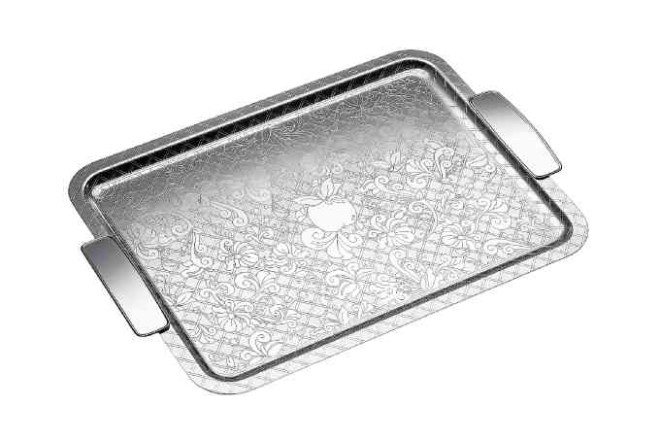
Dutch designer Marcel Wanders marks his debut with Christofle, a manufacturer of fine silver flatware and home accessories based in France, available at Rustan’s.
Internationally renowned for his iconic Knotted Chair, Wanders is regarded as “a bad boy of the design world.”
But this time, he has created silverware consistent with his fancy, yet sensitive to the history and tradition of Christofle. “It was a pleasure to work for such a house,” he says, “to immerse myself in its history, to get in touch with a slower way of things.”
For the Garden of Eden line, Wanders says: “We sat around a table and pondered calmly, letting it be, letting the dough stand. Our work rhythm was the antithesis of today’s lifestyle.”
The handles and backs of each spoon, fork or knife are decorated with a single engraving, like a ballerina’s leg garbed in embroidered hosiery. Patterns of interlacing, leaves, flowers and curls are inspired by a lush garden. Fine striping outlines the contour of each item.
The concept behind Garden of Eden is to create elaborate silverware that reintroduces a sense of the precious, the sensuous and the poetic.
The launch of this new line of silverware revives the charm of bygone days without being excessively nostalgic.
Garden of Eden demonstrates Christofle’s appreciation of the silversmith’s craft. It highlights the critical importance of handcraft, patience, slow observation of things, and attention to detail to everything produced in Christofle’s workshops.
The beauty and the technical artistry in the products are immediately apparent. However, one particular detail draws special attention to the decoration, which is engraved on the bowl, or the back of the spoon.
The engraving on the back is embossed. It is the fruit of complex, precise and delicate labor that requires the silversmith to place the silver leaf on a template and beat it to obtain the desired form and decoration. It all depends on the accuracy and gentleness of the gesture, which gives each spoon’s bowl the same relief and produces an overall harmony.
On closer inspection, the engraving reveals its secrets. It is composed of a blend of granulation, polishing and filaments— which means there is no more excuse for not setting the table à la française, with the backs of the silverware turned up, rather than in the English style.
The back of the spoon is as fine-textured on the tongue as if it were perfectly smooth.
Temptation is, however, not absent from Christofle’s latest creation. On the contrary, this theme is developed by variations on the seven deadly sins, symbolized by a line of accessories created solely for the launch of the silverware and its scenography.
“The notion of paradise does not exclude the notion of good and evil,” says Wanders, “but in this case, we approach it with a touch of humor.”
The designer portrays avarice as a magnifying glass, all the better to see if one is being robbed; sloth by an ashtray; wrath by a mask, to hide one’s face; envy by a carriage-clock; pride by a mirror reflecting one’s narcissism; lust by a sex toy.